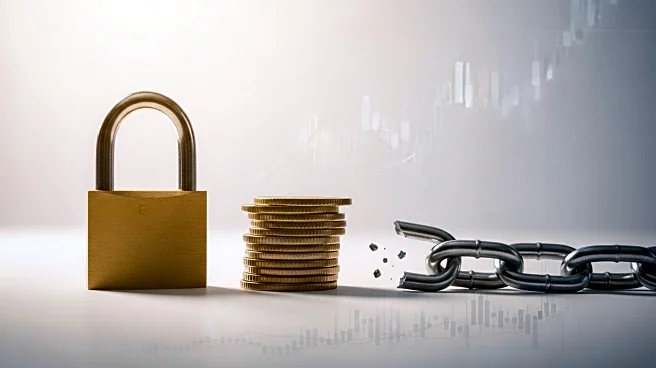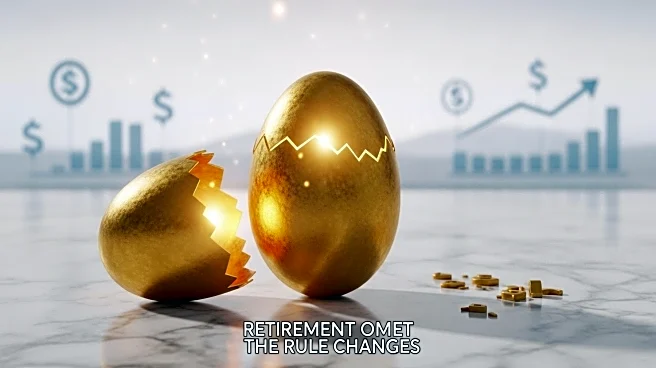What is the story about?
What's Happening?
The Internal Revenue Service (IRS) has announced significant changes to retirement savings rules for employees aged 50 and older who earn more than $145,000 annually. These changes, part of the SECURE 2.0 Act, will take effect on January 1, 2026. Under the new regulations, these workers will be required to make 'catch-up' contributions to their 401(k) or similar retirement plans using Roth (after-tax) dollars. This adjustment affects various retirement plans, including 401(k), 403(b), Government 457(b) plans, SIMPLE 401(k), SIMPLE IRA plans, and SARSEPs. The change means that high earners will need to pay taxes on these contributions upfront, altering the traditional pre-tax contribution method.
Why It's Important?
This regulatory shift is significant for high-earning workers over 50, as it changes how they can maximize their retirement savings. Previously, these individuals could make additional pre-tax contributions, but the new rules require these to be Roth contributions, impacting their take-home pay. For employers, this change introduces additional complexity in managing retirement plans. Companies will need to update their systems to accommodate Roth contributions or potentially cease offering catch-up contributions to high earners. This will require tracking employee income more closely and updating plan documents and communications. The IRS has provided a transition period, allowing employers to make a 'reasonable good faith effort' to comply until full compliance is expected by January 1, 2027.
What's Next?
Employers and HR departments must prepare for these changes by updating their retirement plan systems and ensuring they can handle Roth contributions. They will also need to communicate these changes to affected employees and offer them the option to opt out of catch-up contributions if desired. As the deadline approaches, companies will need to ensure full compliance with the new regulations to avoid potential penalties. For employees, this change necessitates a reevaluation of their retirement savings strategies to account for the tax implications of Roth contributions.
AI Generated Content
Do you find this article useful?













